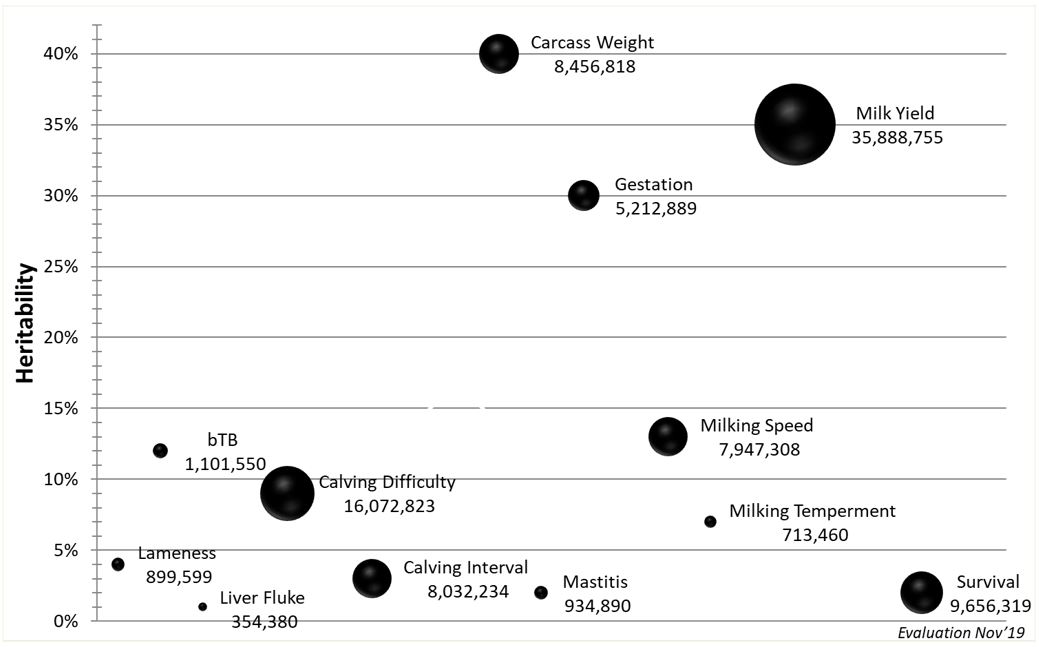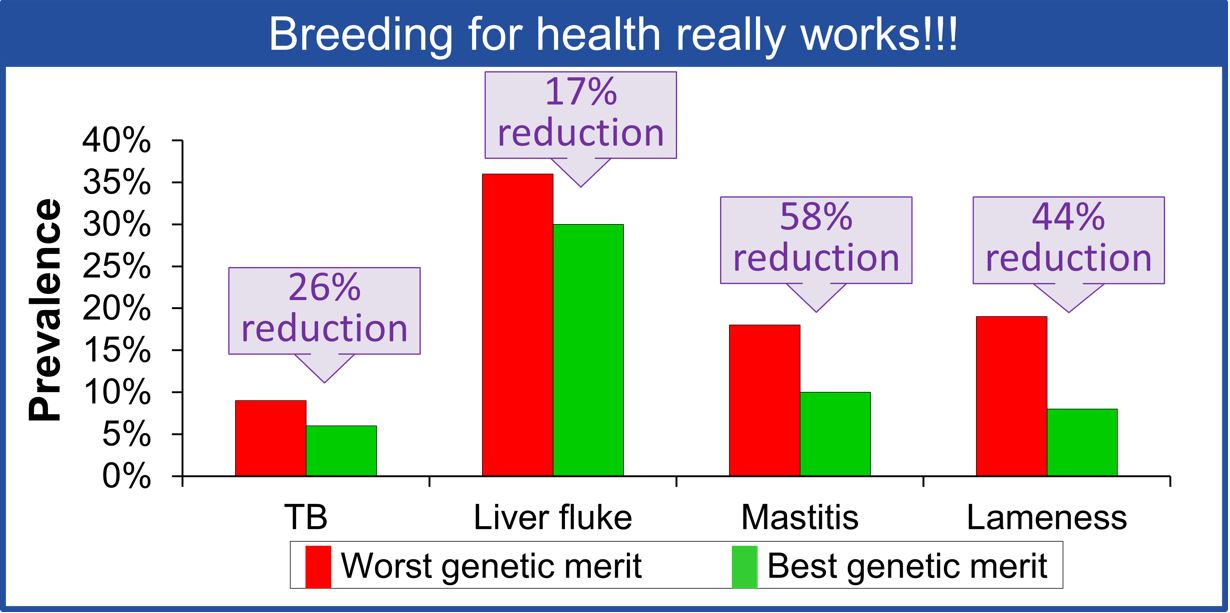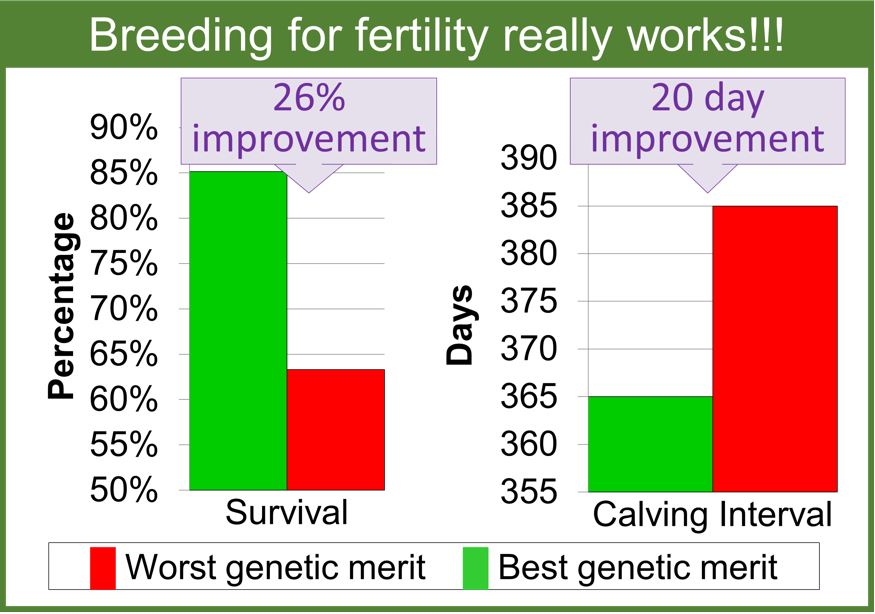A common misconception is that breeding should not be pursued as a method for improving health or fertility traits due to their low heritability. Low heritability does not mean the trait cannot be improved. Low heritability simply signifies that much more records are required to achieve the same rate of genetic gain as high heritability trait (e.g., carcass weight or milk yield).
The crucial prerequisite to determine how successful (or fast) breeding for health and fertility traits will be is that genetic variation must be evident; in practical terms, there must be observable differences among family lines of cattle in their incidence of disease (e.g., do some cows in a herd always become lame while others never do?) or fertility performance (e.g., do some cows reside in the herd for longer than others?).
Due to the vast quantity of health and fertility traits recorded on the ICBF database, it is evident, observable differences between animals exist, as does genetic variation for each of the health and fertility traits considered (Figure 1). This allows ICBF to generate PTAs (predicted transmitting ability) for each animal, thus allowing you to make more informed breeding decisions to combat disease and improve fertility.

To answer the question, just how much of a difference on-farm is there between animals categorised as the best and worst on genetic merit, ICBF undertook an analysis. Based on a calf’s PTA for TB, liver fluke, lameness, mastitis, survival, and calving interval each calf was categorised as either having the worst genetic merit (i.e., bottom 20% based on PTA), best genetic merit (i.e., top 20% based on PTA), or average genetic merit (i.e., intermediate PTA). These PTAs were derived using only ancestral or genomic data, but since the animal was only a calf at the time of categorisation none of their own performance was used to develop the PTAs. On-farm performance for each calf were subsequently recorded on the ICBF database throughout its life. The average prevalence of disease and fertility performance was compared against the PTA categorisation for each trait separately (Figure 2 and 3).
For all traits considered, animals categorized as having the best genetic merit as calves performed consistently better throughout their life than calves categorized as having the worst genetic merit for all health and fertility traits (Figure 2 and 3).


This analysis quantifies the ability of breeding to actively reduce the incidence of disease on farm and improve fertility. Low heritability traits should be pursued as a method for improving health and fertility, despite them typically being low heritability traits.
That said, low heritability traits can suffer from slower genetic gain where data is limiting; that’s why recording of health and fertility traits are crucially important to continue to the continued differentiation of genetically elite and inferior cattle for health and fertility traits. For more information, please contact the HerdPlus office on 023-8820452 or email [email protected].

